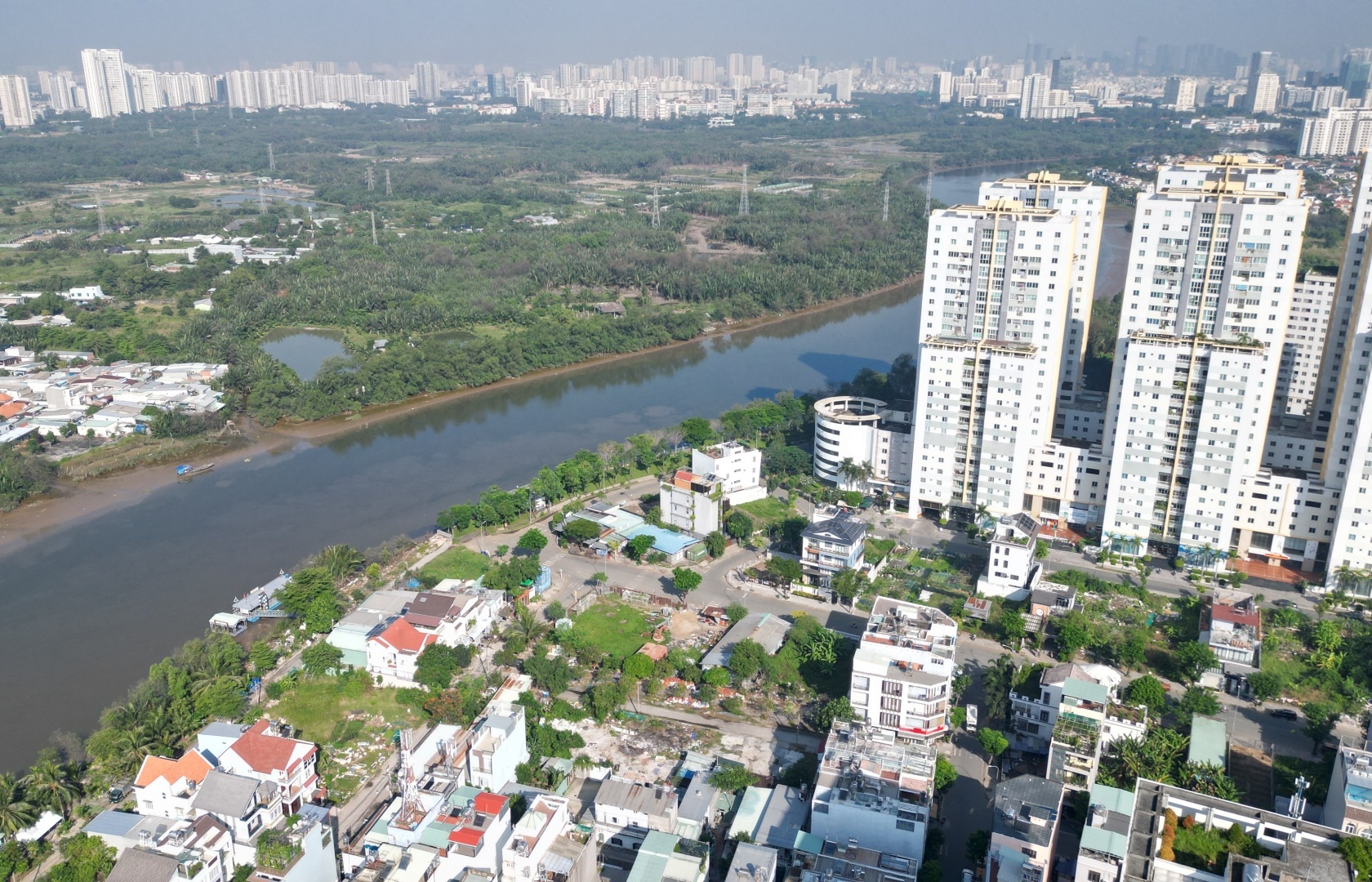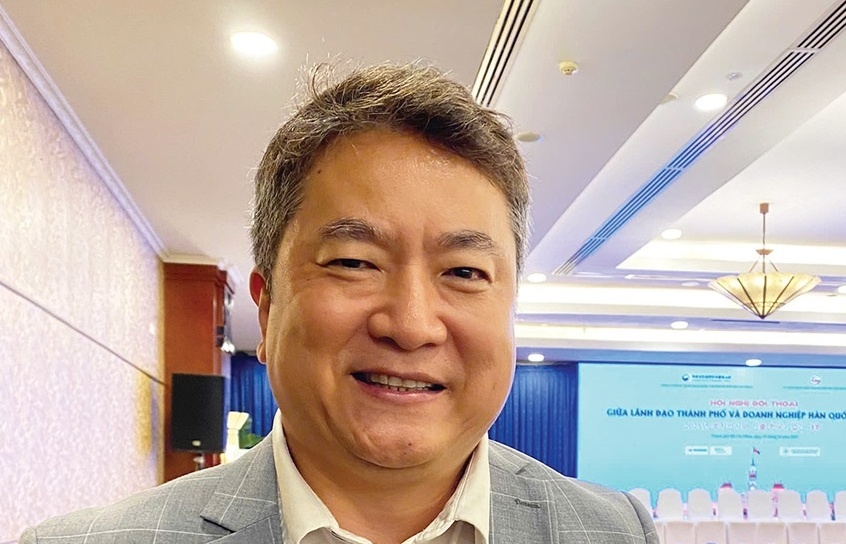Move on listed firms’ foreign holdings cap
The State Bank of Vietnam has proposed that the government not lift a cap on listed companies’ foreign holdings this year to limit negative effects from possible capital withdrawal on the domestic capital market.
The State Bank sent its proposal to the government last week to keep the foreign cap at 49 per cent. The proposal is also designed to minimise the effects of world tightening on monetary policy, surplus of foreign currency in Vietnam’s banking system, interest rates risk and challenges to state management.
Analysts have said that the government should draft guidelines for the supervision of new trading accounts and capital flows directed by foreign investors. Such guidelines, they say, are also necessary for supervising banking operations and ensuring the stability of financial markets.
“The opening should be taken gradually for foreign investors to prevent the country from shock on monetary market,” said an official from the central bank who declined to be named.
A surplus of US dollars from savvy indirect capital flows late last year led to the dong’s appreciation against the US currency.
Tightening US dollar monetary policy pushed the mobilising interest rate on the dollar to increase steadily in 2006 from 4.5 per cent to 5.0 per cent per year for a 12- month deposit in Vietnam.
Dollar interest rate increases also pushed up the dong mobilising interest rates by 0.1-0.4 per cent per year in order to prevent the shift from dong to dollar in deposits. The
foreign currency deposit growth rate remained unchanged at 27 per cent on average, while dong deposits rose sharply at 36 per cent on average in 2006.
“Once the management on the capital flows is inefficient, the surplus of operating capital in the banking systems will keep continuously available this year, challenging the central bank management,” said Pham Thi Kim Thanh, deputy director of central bank monetary policy.
The dollar surplus and operating capital in the banking system has led to an increase in investment in valuable papers (What are “valuable papers”?), which would create pressures on the money supply if banks’ liquidity management were to falter and if credit institutions re-sell to the central bank once the capital withdrawals occur. Meanwhile, the secondary market has yet to develop while liquidity of these papers (what papers?) is not high.
Last year, the central bank did not have enough funds to buy in for the country’s foreign currency reserves. The country’s foreign currency reserves increased by $2.5 billion last year, equal to 12 weeks of imports, attributable in part to increased indirect investment in the securities market.
Total payments increased sharply with a year-on-year average rate of 30 per cent due to the raising of net foreign currency assets by 50 per cent in 2006 compared to 17 per cent in 2005.
Analysts have said that the government should draft guidelines for the supervision of new trading accounts and capital flows directed by foreign investors. Such guidelines, they say, are also necessary for supervising banking operations and ensuring the stability of financial markets.
“The opening should be taken gradually for foreign investors to prevent the country from shock on monetary market,” said an official from the central bank who declined to be named.
A surplus of US dollars from savvy indirect capital flows late last year led to the dong’s appreciation against the US currency.
Tightening US dollar monetary policy pushed the mobilising interest rate on the dollar to increase steadily in 2006 from 4.5 per cent to 5.0 per cent per year for a 12- month deposit in Vietnam.
Dollar interest rate increases also pushed up the dong mobilising interest rates by 0.1-0.4 per cent per year in order to prevent the shift from dong to dollar in deposits. The
foreign currency deposit growth rate remained unchanged at 27 per cent on average, while dong deposits rose sharply at 36 per cent on average in 2006.
“Once the management on the capital flows is inefficient, the surplus of operating capital in the banking systems will keep continuously available this year, challenging the central bank management,” said Pham Thi Kim Thanh, deputy director of central bank monetary policy.
The dollar surplus and operating capital in the banking system has led to an increase in investment in valuable papers (What are “valuable papers”?), which would create pressures on the money supply if banks’ liquidity management were to falter and if credit institutions re-sell to the central bank once the capital withdrawals occur. Meanwhile, the secondary market has yet to develop while liquidity of these papers (what papers?) is not high.
Last year, the central bank did not have enough funds to buy in for the country’s foreign currency reserves. The country’s foreign currency reserves increased by $2.5 billion last year, equal to 12 weeks of imports, attributable in part to increased indirect investment in the securities market.
Total payments increased sharply with a year-on-year average rate of 30 per cent due to the raising of net foreign currency assets by 50 per cent in 2006 compared to 17 per cent in 2005.
What the stars mean:
★ Poor ★ ★ Promising ★★★ Good ★★★★ Very good ★★★★★ Exceptional
Related Contents
Latest News
More News
- Robust market could pull in fund appetites (April 04, 2025 | 15:52)
- Foreign direct investment off to stirring start in 2025 (April 04, 2025 | 15:44)
- Leaders vow to soothe FIE project headaches (April 04, 2025 | 15:10)
- Korean groups call for tax processes to be timely ironed out (April 04, 2025 | 15:01)
- Successful lifting of Long Thanh International Airport central terminal steel roof structure (April 04, 2025 | 12:00)
- Belgian royals attend inauguration of service-office complex in Quang Ninh (April 03, 2025 | 14:36)
- Foreign groups keen on smart manufacturing (April 02, 2025 | 14:46)
- Technology startups must deliver coherent value (April 02, 2025 | 14:41)
- Smart Chinese manufacturing forms a win-win collaboration (April 02, 2025 | 14:34)
- BUV expands campus to welcome additional students (April 02, 2025 | 10:00)

 Tag:
Tag:





















 Mobile Version
Mobile Version